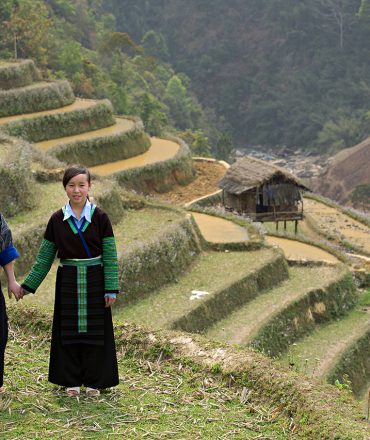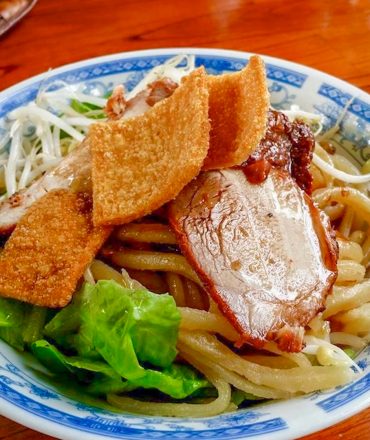The Landscape
Awe-inspiring landscapes are what Vietnam does best; from the stunning 2000 or so karst-covered islands that majestically rise out of the emerald water at world-famous Halong Bay; to the world’s biggest cave, nestled amongst ravishing rainforest, limestone hills and azure-colored water at the lesser known, but equally spectacular Phong Nha-Ke Bang National Park; the cool, clear air, mountainous terrain, vibrant-green terraced rice-paddies dotted with water-buffalo and colorfully-clothed ethnic minority people of Sapa and Dalat; hundreds of beautiful beaches ranging from upmarket resort-style beaches at Nha Trang and Mui Ne to stunning stretches of unspoiled, virtually unvisited coast such as Danang’s My Khe Beach (voted one of the world’s best beaches by Forbes magazine), the secluded bays and multi-colored marine life of the Cham Islands and the unspoiled tropical paradise islands of Con Dao and Phu Quoc; plus the vibrantly colored vegetation that surrounds the floating water-world of the Mekong Delta; with many more breathtakingly beautiful places of natural beauty scattered around the country.
The Culture
In addition to its melting pot of foreign influence Vietnam proudly displays its own distinct cultural identity, particularly evident in its fashion, the arts and religion. Perfect examples of which are the effortlessly elegant Ao Dai, a long, figure-hugging silk tunic worn over baggy pants; the ancient and unique Vietnamese art of Water Puppetry Theatre, where handcrafted wood-carved puppets glide above a waist-deep pool of water acting out stories of love and loss; and one of the most common aspects of Vietnamese culture, ancestor worship. Ancestor altars feature in the majority of homes where essential gatherings of family members frequently occur to honor dead loved ones by burning incense sticks, money and leaving food offerings.
Vietnam is home to a rich and colorful tapestry of over 50 ethnic minority groups, most of whom live in mountainous areas, earning them the name ‘highland people’(nguoi thuong) in Vietnamese. Some have inhabited Vietnam for thousands of years, others migrated over from China, Laos and other bordering countries, sometime in the past few centuries. The most colorful assortment of hill-tribe people reside in the very north of Vietnam (Sapa and Bac Ha), nestled amongst mountains, making a semi-nomadic living from cultivating the land. Their eye-catching costumes of tunics, skirts, vests, hats and turbans are intricately hand-embroidered by the women and girls of the tribe.
The Cultural Attractions
The landscape of Vietnam has been blessed by a bounty of important cultural and architectural sites, many of which were left behind by ancient civilizations or former colonizers. No less than seven of the nation’s attractions have been named Unesco World Heritage Sites; the previously mentioned Halong Bay & Phong Nha Ke Bang National Park; plus the former imperial capital-Hue, brimming with palaces, pagodas, tombs and temples; Hoi An Ancient Town, featuring perfectly preserved Chinese merchant shop-fronts dating back to the 15th Century, encasing shops, restaurants, art galleries, museums and tailors; My Son Sanctuary, the most important spiritual capital in the Champa Kingdom from the 4th to the 14th century AD;Thang Long Imperial Citadel in Hanoi & Ho Dynasty Citadel in Thanh Hoa Province.




